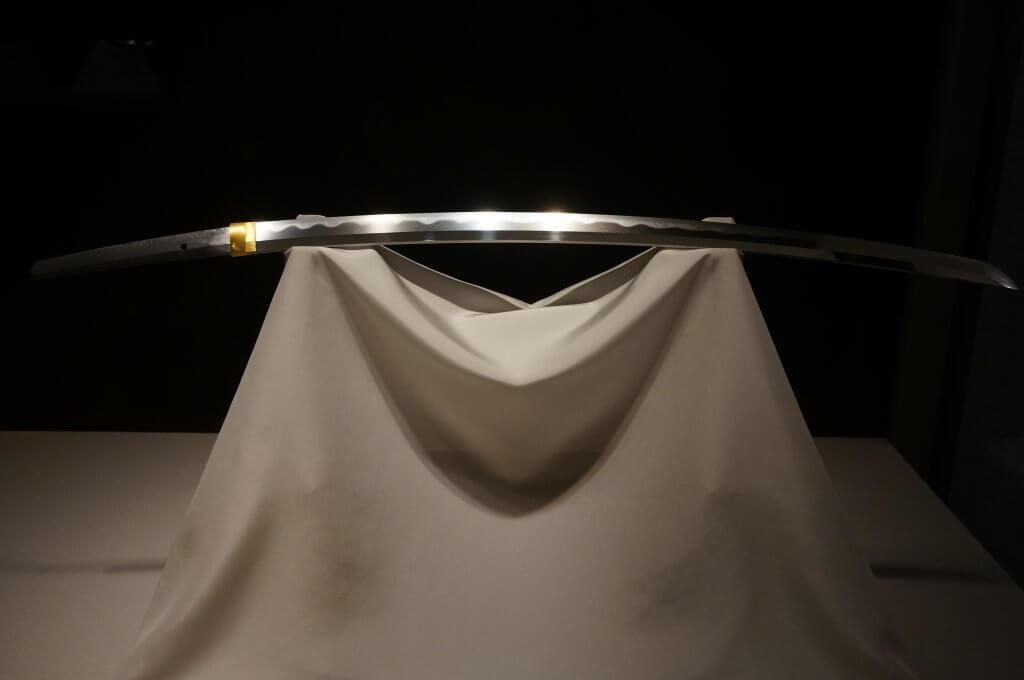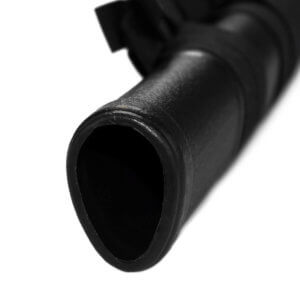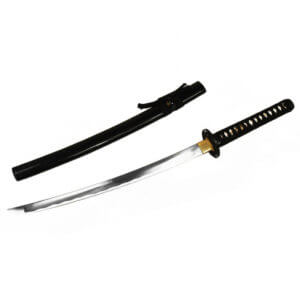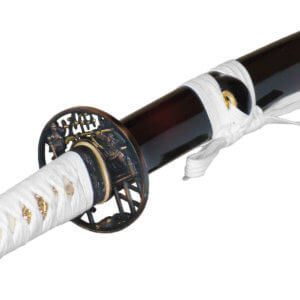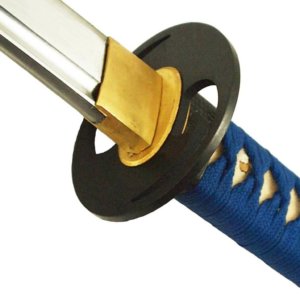Nihonto is a general term for the Japanese sword. The word is made up of Nihon (=Japan) and To (=sword).
This refers to genuine samurai swords that are made in the millennia-old tradition of Japanese swordsmiths. Only a nihonto is a real katana in the strictest sense.
History and materials
Even though in Japan long before the samurai Swords forged, the term nihonto usually refers to swords known as samurai swords.
Nihonto is by no means limited to the famous katana; many have also been forged and used as tachi, wakizashi, etc.
One A list of the best-known sword types can be found here.
A genuine Nihonto must be made in a traditional sword forge and the blade is made of Tamahagane steel produced in Japan.
Fine materials such as magnolia wood and silk are generally used for the mount (koshirae).
In addition to the Japanese swordsmith, other craftsmen such as the polisher (togishi) and sword sheath maker (sayashi) are also involved in the completion of a complete sword.
Epochs of Nihonto swordsmithing
The Japanese sword has undergone several stages of development over the centuries. Depending on warfare, area of use, social development and general trends, swords are categorised into sword eras in terms of their design.
Koto - The ancient swords of the samurai
From the 8th to the 17th century (more precisely from the middle of the Heian period to the end of the Azuchi Momoyama period), swords with the corresponding characteristics are categorised as koto. The 5 well-known sword schools that are often mentioned in connection with Japanese swordsmithing are rooted in this period: Yamato, Bizen, Soshu, Yamashiro and Mino.
The early blades from this era were usually mounted as tachi and are therefore long with a relatively strong curve (sori). However, tanto were also frequently made at the time. From the 14th century onwards, the uchi-katana and the most famous samurai sword today, known as the katana, were also added.
Katana is actually an umbrella term for several swords, a single-edged sword with a curvature. Today, the term is generally used for a sword about 1 metre long that is worn on the belt with the cutting edge pointing upwards.
Shinto - New swords
Although they are of course old swords from today's perspective, the swords from the 17th and 18th centuries are called Shinto with the appropriate characteristics. Historically, the era belongs to the Edo period, also known as the Tokugawa period. Initially, large blades with a long tip were in fashion, later with the trend towards katana, mainly shorter blades.
ShinShinto - New new swords
Shinshinto literally means "new new swords". It is the term for swords that are even younger than the Shinto. Shinshinto is typically used to refer to Nihoto from the late 17th to late 18th century. Occasionally these swords are also seen in sources as a subgroup of Shinto swords.
These swords mainly include new editions in the design of the classic swords of the Kamakura (1185-1333) and Nanbokucho (1336-1392) periods.
Gendaito - Modern Japanese swords
Gendaito means swords of the present and is usually used for swords from the end of the 19th century. Many of these were produced for the Second World War. Contrary to rumours to the contrary, some gunto swords for use in war were by no means cheap mass-produced items.
Even in this period, there were high-quality customised products that met all expectations of a Japanese katana. These are a typical example of Gendaito.
Shinsakuto - New, Japanese hand-forged swords
The translation of Shinsakuto is newly made sword. Even today, swordsmiths still work in the tradition of their ancestors in Japan.
The newly manufactured swords continue to preserve the art of Japanese blacksmiths, and even today there are still many admirers all over the world. A more comprehensive article about Shinsakuto can be found here.
Inaccuracy in the use of the term Nihonto
The terms Nihonto and Japanese sword are actually clearly defined. The name is only correct for swords that were made in Japan according to the traditional manufacturing method.
Unfortunately, it is now common on the internet for all swords that look like katana to be labelled as Japanese swords or nihonto.
Only certified swordsmiths are permitted to produce Nihonto in Japan and the production must be in accordance with the Japanese swordsmithing tradition.
Only the materials and work processes used for this result in a genuine Nihonto. As the production is relatively complex, the prices for genuine Japanese swords are correspondingly high.
A sword produced to these standards in Japan today costs a high 4-5 figure sum. With a bit of luck, you can get a historical sword of the appropriate quality for 2000 - 3000 euros. Swords costing less than 1000 euros that are offered as "Japanese swords" are certainly not genuine Nihonto, unless they are completely rusted.
Buy Nihonto at Samuraischwert.kaufen
We offer an interesting selection of antique and historical Nihonto. This is particularly interesting for collectors and real sword fans.
Please note that we only sell these swords after personal contact with the buyer.
You can find a current selection in our Shop category Nihonto.
A typical example of a beautiful Nihonto specimen:
Image source of the featured image: By SLIMHANNYA - Own work, CC BY-SA 4.0, https://commons.wikimedia.org/w/index.php?curid=95356465

